I am often asked what it takes to fly many different airplanes, especially when some are prototypes for which very little data exists. My reply is usually something like, “Well, first of all, you have to have good fundamental flying skills.” As if we all know what that phrase means. It’s a throwaway line implying that if you have the skills, you know it, and if you don’t, then you’ll know it when you have them. It really doesn’t help anyone get any better.
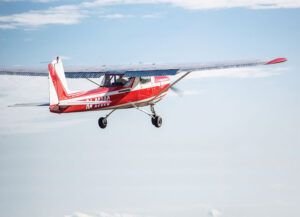
So what are “good fundamentals”? In the most general sense, it is the ability to make an aircraft go precisely where you want it to go when you want it to go there and do it within the limits of the aircraft. It also means that you can adapt to virtually any aircraft (within a reasonable performance spectrum), using general techniques applied to a specific situation.
An example is in order. Many of us learned to land our primary trainer in a very rote manner. We were told that we needed to be at a precise altitude when we were abeam the numbers and that if we set the rpm to a specific number, we’d get the right speed for a descent that ended up at the runway. We were told to add a certain amount of flaps abeam the number, another amount on base leg and yet another on final (if, indeed, we had flaps). Each of these numbers worked perfectly to deliver your trainer to a touchdown spot—but they were specific to that airplane.
When you moved on to a more advanced airplane, you probably received a checkout from an instructor (or at least a pilot experienced in the airplane), which gave you another—but similar—set of numbers to use for that airplane. Throttle, mixture, prop and flap settings are offered as baselines, and they again matched you up to a profile that was successful with that airplane. You also had a checklist for configuring the airplane in both cases, but the flying itself was essentially rote. “Do it exactly like this every time, and you’ll be successful!”
Beyond Procedures
This is an excellent way to fly, of course—procedural and effective. Yes, you’ll have to make variations and allowances for winds and loading, but these fit within the rote learning model for each specific airplane. However, a good pilot who is curious will begin to experiment, varying speeds and power settings, altitudes at which the descent is begun and where you turn base (varying the final approach altitude). Changing things up like this gives you a better feel for what the airplane can do and what it needs to make it to the runway. Get too high, and you’ll need more flaps or a slip. Too low, and power must be added to make the runway.

These variations are the beginning of building up a good set of fundamentals—the ability to feel what you need to do to make the airplane go where you want it to go. This is true for all phases of flight—not just landing, which is the example I’ve used. I get asked, “How much rudder do I need to counteract torque on takeoff?” with a particular airplane. My answer is always, “Whatever I need to keep the nose pointed in the direction I want.” I don’t say “this much rudder” or “this amount of bank to counteract X amount of wind.” Having good fundamentals is about putting in enough of each control to make the airplane go where you want.
It also means understanding speed control and staying where you want relative to stall—or even VNE. If you remember that stall is a function of angle of attack, so that the actual stall speed is affected by bank angle (or, more accurately, the load you put on the wing), you begin to get a feel for the airplane—and not just a particular airplane, any airplane you might fly. Most airplanes will give you some aerodynamic warning before they stall—and it is a good idea to find out what this is at the very beginning of your relationship with a type. Eventually, you want to reach the point where you can manage speed without reference to an airspeed indicator. You should be able to feel when the airplane is happy and when it’s not.
Once you understand how to keep the airplane flying in its speed range and know how to make it go where you want, pointed the way you want, you have begun to master the fundamentals. Many textbooks go into great detail on how to make these things happen, and you should read them. But in the end, it all comes down to the fundamentals of speed and attitude control. If you can fly without an airspeed indicator and with no slip/skid ball, and an experienced pilot/passenger can’t tell the difference, then you are achieving the level of skill you need to move on to more exotic machines.
“OK,” I can hear you asking, “but what about landings? Don’t we have to figure out the exact sight picture to land each specific airplane?” Well, yes, and no. Landing an airplane is about getting it just barely above the runway with just enough speed to maintain control as it slows and gives up the lift keeping it in the air. To do this, you must have control of speed and attitude—and then you have to know where the ground is. The best way to figure out where the ground is going to be for landing is to figure that out before takeoff. Fortunately, if you’re talking light, multi-seat airplanes, they are all going to put your eyes more or less the same height above ground. There are tiny single-seaters that will make you want to go take a few laps in a go-kart before you fly, and some tall amphibian floatplanes that will have you spending more time figuring out the sight picture. But overall, if you keep the speed under control and get a very small descent rate going, you can fly it onto the ground and let it touch where you will.
It’s About Scale
And really—that is what it is all about! Make the airplane go where you want it to go. You do this without over-controlling by putting a small amount of control in the direction you want, noting the response, then scaling the input to get the rate you’d like. Putting in a little, then adding what you need, keeps you from overcontrolling. And overcontrolling is almost always worse than under-controlling. Build the ability to observe the response you get to any particular input and then scale it to what you want.
When will you be ready to fly anything with confidence? Well, you’ll know when you are ready when you know. If you approach a new airplane with the thought, “Gee, I wonder if I can land it?” you’re not ready. If you can approach the airplane with confidence—and, of course, a little caution—then you’ve probably reached the place we’re talking about.
And it should be noted: Don’t be upset if you are just a little worried when you take a new type aloft for the first time by yourself. Some apprehension is good for keeping your mind sharp. Like a great old test pilot once said, “If you’re not just a little bit nervous before taking a new airplane up, then you obviously don’t understand what it is you’re about to do.”





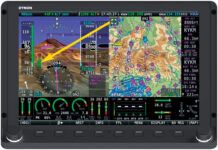



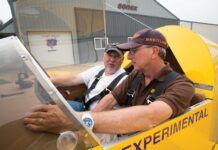
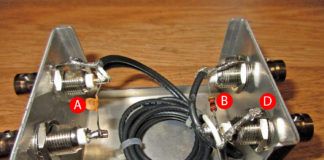

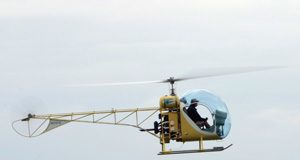
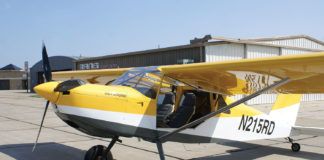
Love Paul Dye articles. Always sensible down to earth info and advice.